The Mughal Emperor Humayun’s Tomb is located in Delhi, India. In 1558, Humayun’s first wife and principal consort, Empress Bega Begum, commissioned the mausoleum, which was constructed by Persian architects Mirak Mirza Ghiyas and his son, Sayyid Muhammad. It is located in Nizamuddin East, Delhi, India. It was also the first large-scale edifice made of red sandstone. The tomb was designated a UNESCO World Heritage Site in 1993, and substantial repair work has been completed since then.
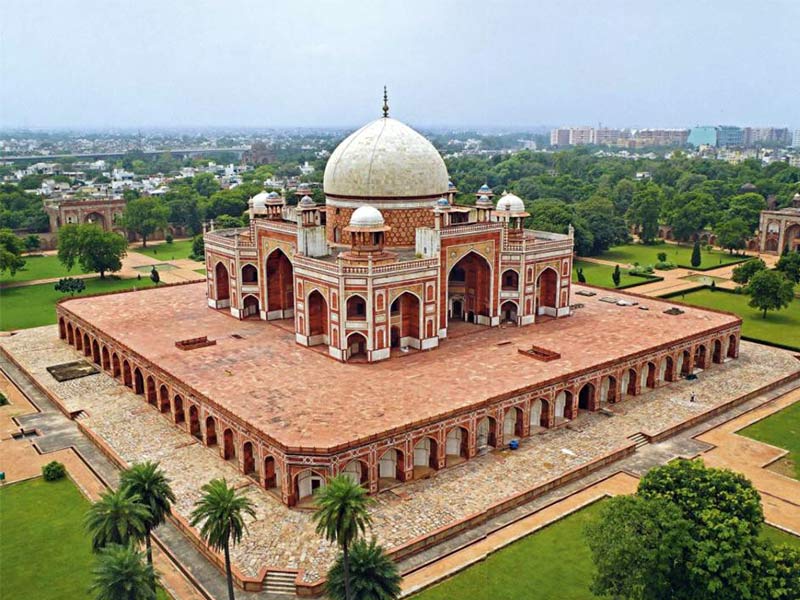
Many minor monuments dot the path leading up to Humayun’s tomb enclosure from the main entrance in the west, including one that is twenty years older than the main tomb itself.
The complex includes Emperor Humayun’s main tomb, which contains the graves of Empress Bega Begum, Hamida Begum, and Dara Shikoh, Humayun’s great-great-grandson and son of the later Emperor Shah Jahan’s burial, as well as the burials of several other Mughals, including Emperor Jahandar Shah, Farrukhsiyar, Rafi Ul-Darjat, Rafi Ud-Daulat, Muhammad Kam, and others. With its magnificent Charbagh garden, which was evocative of Persian gardens but had never been seen in India before, it was a watershed point in Mughal architecture and set a precedent for subsequent Mughal building.
It stands in stark contrast to his father, the first Mughal Emperor Babur, who was buried at the Bagh-e Babur’s tomb in Kabul. Though it was the latter who established the custom of being buried in a paradise garden. Gur-e Amir, his ancestor and Asia’s conqueror Timur’s mausoleum in Samarkand, was used as inspiration.
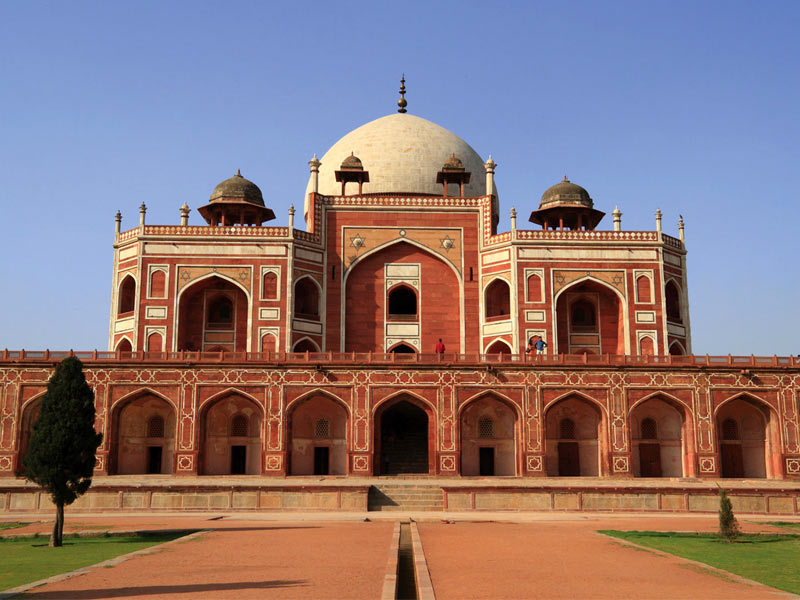
The location on the banks of the Yamuna River was chosen because of its closeness to Nizamuddin Dargah, the mausoleum of Delhi’s famed Sufi saint, Nizamuddin Auliya, whose house, Chilla Nizamuddin Auliya, sits just northeast of the tomb. During the Indian Rebellion of 1857, the last Mughal Emperor, Bahadur Shah Zafar, took sanctuary here with three princes and was caught by Captain Hodson before being deported to Rangoon. During the Slave Dynasty, this territory was governed by the ‘Kilo-Kheri Fort,’ which was as the capital of Sultan Qaiqabad, Nasiruddin’s son (1268–1287).
Also Read, Bidar Fort: A Beautiful Fort with a Forgotten History
Central Asian and Persian forms of Islamic architecture were imported to the Indian subcontinent during Turkic and Mughal rule, and by the late 12th century, early structures in this style were rising in and around Delhi, the capital of the Delhi Sultanate. The Qutb Minar and the accompanying Quwwat-ul-Islam mosque were erected by the Turkic Slave dynasty (1193 CE). In the following centuries, North India was successively dominated by foreign kingdoms, giving rise to Indo-Islamic architecture.
While the dominant architectural style was trabeate, which used pillars, beams, and lintels, this introduced the arcuate style of construction, which flourished under Mughal patronage and by incorporating elements of Indian architecture, particularly Rajasthani architecture, such as decorative corbel brackets, balconies, pendentive decorations, and indeed kiosks or chhatris, to develop a distinct Mughal architecture style, which was to become a national style.
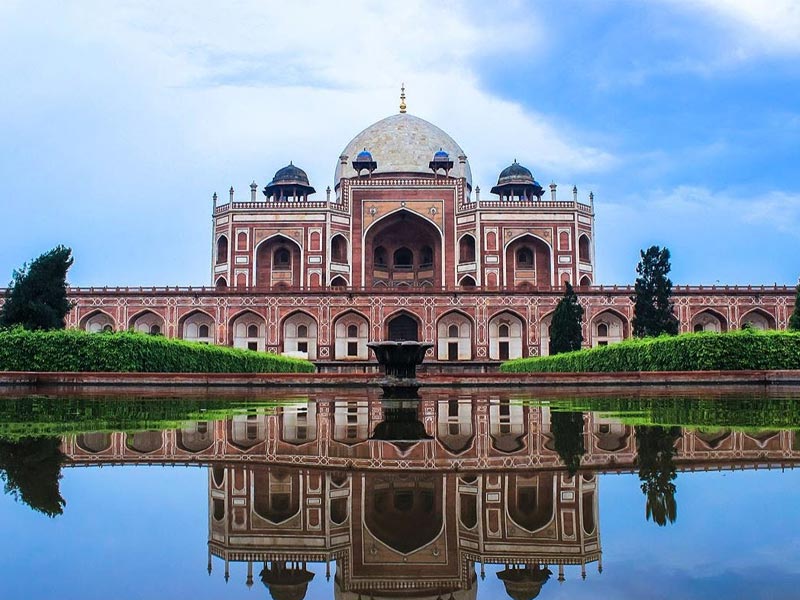
Central Asian and Persian forms of Islamic architecture were imported to the Indian subcontinent during Turkic and Mughal rule, and by the late 12th century, early structures in this style were rising in and around Delhi, the capital of the Delhi Sultanate. The Qutb Minar and the accompanying Quwwat-ul-Islam mosque were erected by the Turkic Slave dynasty (1193 CE). In the following centuries, North India was successively dominated by foreign kingdoms, giving rise to Indo-Islamic architecture.
While the dominant architectural style was trabeate, which used pillars, beams, and lintels, this introduced the arcuate style of construction, which flourished under Mughal patronage and by incorporating elements of Indian architecture, particularly Rajasthani architecture, such as decorative corbel brackets, balconies, pendentive decorations, and indeed kiosks or chhatris, to develop a distinct Mughal architecture style, which was to become a national style.
Things to see around Humayun’s Tomb
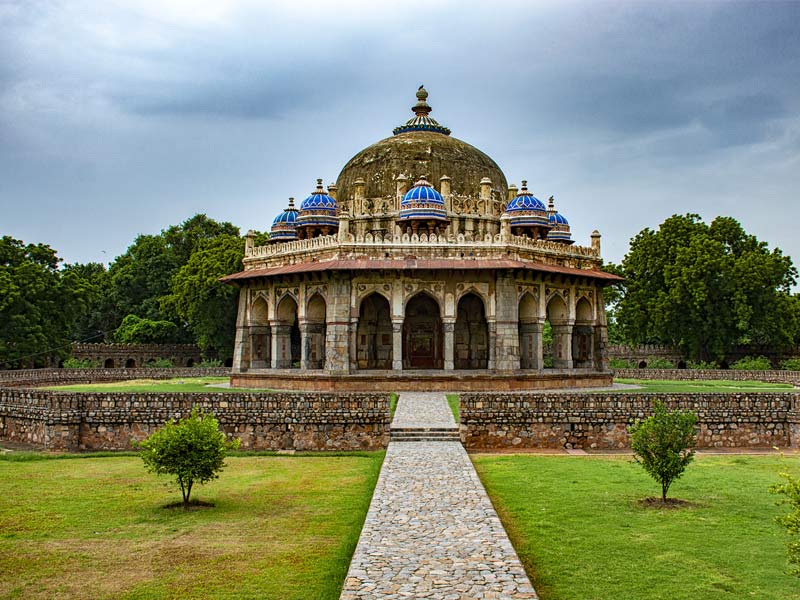
Isa Khan’s tomb and mosque: Built in 1547 CE, it is the burial complex of Isa Khan Niyazi, an Afghan noble in Sher Shah Suri’s Suri dynasty’s court who opposed the Mughals. The octagonal mausoleum is set within an octagonal garden that was constructed during his lifetime and that of Islam Shah Suri, Sher Shah’s son. It was afterwards used as a burial ground for Isa Khan’s whole family.
A three-bay broad red sandstone mosque stands on the tomb’s western side. The octagonal tomb displays a remarkable resemblance to other Sur dynasty monuments in Delhi’s Lodhi Gardens and shows a clear progression in the development of the main tomb’s beautiful architectural style.
Afsarwala Tomb and Mosque: Located near the complex’s southwest end, the Afsarwala tomb is attributed to an unknown figure. 1566-67 CE is the date on one of the marble tombs within the tomb. The mosque itself may be dated to the same time based on its location, which is near to rather than away from the tomb.
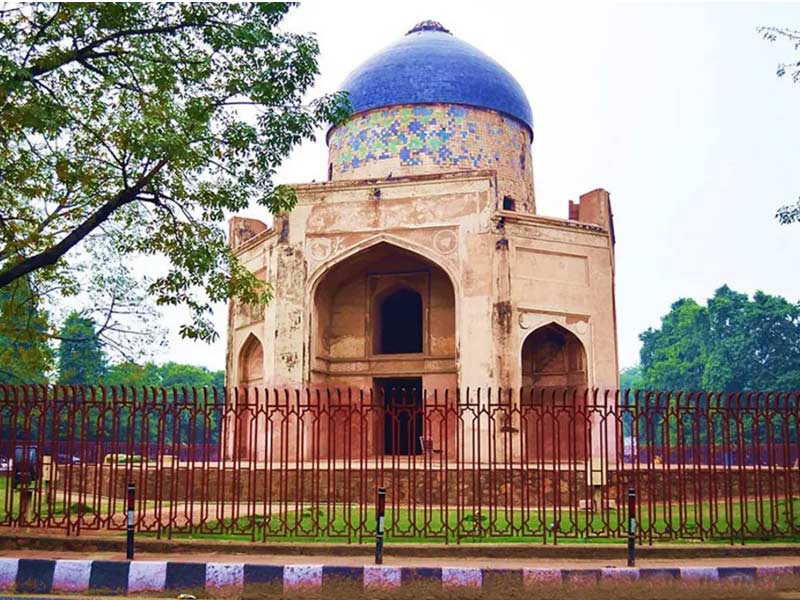
Nila Gumbad: The mausoleum known as Nila Burj (now known as Nila Gumbad) or ‘Blue Dome’ is beyond the complex’s perimeter and is named for its remarkable blue glazed tiles. It was erected for his servant Miyan Fahim by Abdul Rahim Khan-I-Khana, son of Bairam Khan, who was also a courtier in Mughal Emperor Akbar’s court. Fahim, who not only grow up with his son but also died in 1625/26 with one of Rahim’s own sons, Feroze Khan, battling against the Mughal commandant Mahabat Khan’s uprising.
Barber’s Tomb: Within the Char Bagh, at the south-east corner, is a tomb known as Nai-ka-Gumbad, or Barber’s Tomb, which belonged to a royal barber and is dated to 1590-91 CE by an inscription found within. Its close proximity to the Humayun’s tomb and the fact that it is the only other structure inside the tomb complex imply its significance; nevertheless, there are no inscriptions indicating who is buried there; the term Barbers tomb is the local name of the monument and is therefore still in use.




























